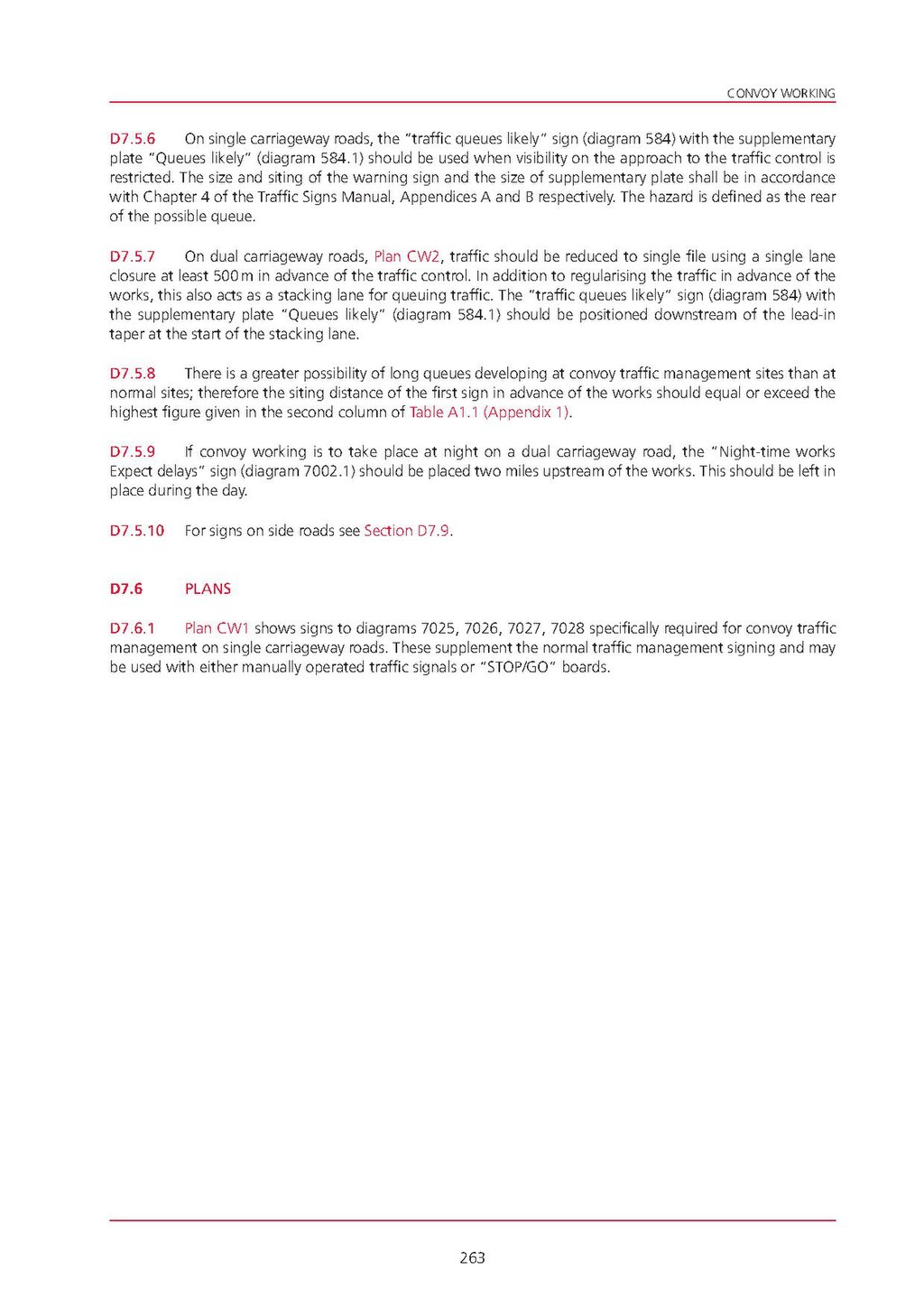D7.5.6 On single carriageway roads, the "traffic queues likely" sign (diagram 584) with the supplementary plate "Queues likely" (diagram 584.1) should be used when visibility on the approach to the traffic control is restricted. The size and siting of the warning sign and the size of supplementary plate shall be in accordance with Chapter 4 of the Traffic Signs Manual, Appendices A and B respectively. The hazard is defined as the rear of the possible queue.
D7.5.7 On dual carriageway roads, Plan CW2, traffic should be reduced to single file using a single lane closure at least 500m in advance of the traffic control. In addition to regularising the traffic in advance of the works, this also acts as a stacking lane for queuing traffic. The "traffic queues likely" sign (diagram 584) with the supplementary plate "Queues likely" (diagram 584.1) should be positioned downstream of the lead-in taper at the start of the stacking lane.
D7.5.8 There is a greater possibility of long queues developing at convoy traffic management sites than at normal sites; therefore the siting distance of the first sign in advance of the works should equal or exceed the highest figure given in the second column of Table A1.1 (Appendix 1).
D7.5.9 If convoy working is to take place at night on a dual carriageway road, the "Night-time works Expect delays" sign (diagram 7002.1) should be placed two miles upstream of the works. This should be left in place during the day.
D7.5.10 For signs on side roads see Section D7.9.
D7.6PLANS
D7.6.1 Plan CW1 shows signs to diagrams 7025, 7026, 7027, 7028 specifically required for convoy traffic management on single carriageway roads. These supplement the normal traffic management signing and may be used with either manually operated traffic signals or "STOP/GO” boards.
263
